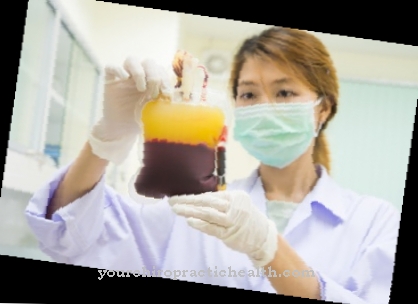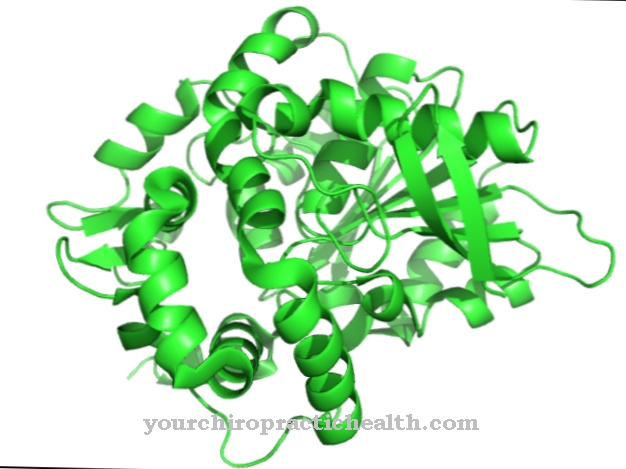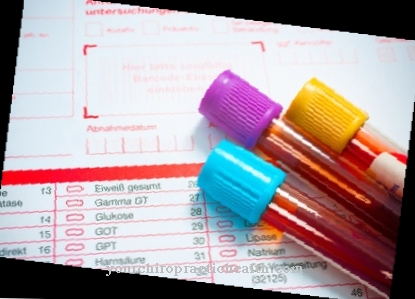Hydroxycobalamin is one of the naturally occurring substances from the vitamin B12 complex. It can be converted into the bioactive adenosylcobalamin (coenzyme B12) relatively easily by the body's metabolism in just a few steps.
Hydroxycobalamin is better than all other compounds from the B12 complex for replenishing the B12 stores in the body. It performs functions in blood formation and cell division and is considered a detoxifier in case of hydrogen cyanide poisoning (HCN).
What is Hydroxycobalamin?
Hydroxycobalamin (vitamin B12b), also known as hydroxocobalamin, is one of the biologically inactive forms of coenzyme B12, which can be converted by the body's metabolism via cyanocobalamin into the biochemically active adenosylcobalamin (coenzyme B12).
Cyanocobalamin - although also biochemically inactive - is known as the actual vitamin B12. Hydroxycobalamin, which occurs naturally in many foods, especially animal foods, is well suited for storage in the body. The chemical formula C62H89CoN13O15P reveals a central cobalt atom or a cobalt ion with a one to three-fold positive charge in the complex structure. Cobalamins are the only known natural substances with a built-in central cobalt ion, which is characteristic of all cobalamins.
Hydroxycobalamin cannot be synthesized by one's own metabolism, but is ingested with food. The organometallic compound hydrocobalamin forms deep red, odorless, crystal-like needles or platelets in the form of acetate, which are moderately soluble in water (20 g / l). The melting point is over 300 degrees Celsius.
Function, effect & tasks
The overriding function that the bioactive coenzyme B12 (adenosylcobalamin) assumes in the human metabolism is its participation as a coenzyme in the methionine metabolism.
In methionine synthase, it is used to regenerate S-adenosylmethionine (SAM) and to form methionine through remethylation of the harmful homocysteine. The second important function of the coenzyme B12 is its participation in the function of the enzyme methylmalonyl-CoA mutase (MCM). MCM is of central importance in the metabolism of some amino acids, fatty acids and certain cholesterols. The functions play a special role in the necessary replication or synthesis of DNA and RNA strands during cell division and have an impact on erythrocyte formation (red blood cells) and the development of nerve tissue.
Hydroxycobalamin also has specific functions in unchanged form that other bioactive cobalamins do not have. These are its extremely good depot function and its ability to take over cyanide groups. The substance has a detoxifying effect in case of prussic acid poisoning, smoke poisoning and is effective in detoxifying the body during smoking cessation. In addition, hydroxycobalanin acts as an effective scavenger for NO radicals.
It is a special form of oxidative stress and is called nitrosative stress. Hydroxycobalamin is able to render NO radicals harmless. In contrast to nitric oxide (NO), which takes on important physiological tasks as a neurotransmitter, NO radicals and the peroxynitrite resulting from degradation products are harmful.
Education, occurrence, properties & optimal values
Hydroxycobalamin is exclusively synthesized by a wide variety of microbes, mainly bacteria. Most of the microbes that can synthesize vitamin B12b are found as symbionts in the stomach of ruminants or in the colon of other herbivores, so that the vitamin B12 supply is ensured by symbiosis with the producing bacteria.
A small percentage of cobalamin-producing bacteria in the human large intestine, as well as in omnivores and carnivores, has no effect on the supply of hydroxycobalamin, because hydroxycobalamin can only be absorbed in the small intestine, i.e. the intestinal section in front of the large intestine and is therefore excreted unused. Relevant amounts of absorbable vitamin B12b are mainly found in meat products, especially in fish and offal (e.g. liver). Smaller amounts can still be found in milk and dairy products. Vegetable foods contain almost no hydroxycobalamin, except in lactic acid-fermented products such as sauerkraut and some legumes.
The biological half-life of cobalamin is 450 to 750 days in the body. The vitamin is constantly released into the small intestine with the bile acid, but largely reabsorbed in the end section of the small intestine, in the terminal ileum, with the help of the intrinsic factor. The total requirement of an adult is therefore only around 2.5 to 3 µg / day. If the vitamin B12 stores are full, the body can compensate for a deficiency over several years, so that symptoms of a deficiency do not appear until very late in some cases.
Diseases & Disorders
A deficiency in cobalamin affects many metabolic processes. The main symptoms of a vitamin B12 deficiency are anemia, anemia and neurological problems.
Basically, a deficiency in vitamin B12 can arise due to a long-term undersupply, as can occur with vegans who completely refrain from consuming animal products. More often than an undersupply of the vitamin, a deficiency occurs due to restricted absorption in the small intestine. A well-known autoimmune disease, pernicious anemia, is caused by the gradual destruction of the parietal cells in the gastric mucosa, which synthesize a specific protein, the intrinsic factor, which protects the hydroxycobalamin through the intestinal passage undigested so that it can be absorbed in the terminal ileum.
Other factors that lead to a reduced absorption of the vitamin are e.g. B. Side effects of gastric acid-inhibiting drugs and the use of nitrous oxide as an anesthetic. On the other hand, with a normal supply and normal resorption, a deficiency can be caused by an increased demand, e.g. B. in chronic stressful situations, with nicotine abuse and also with excessive alcohol consumption.



.jpg)























